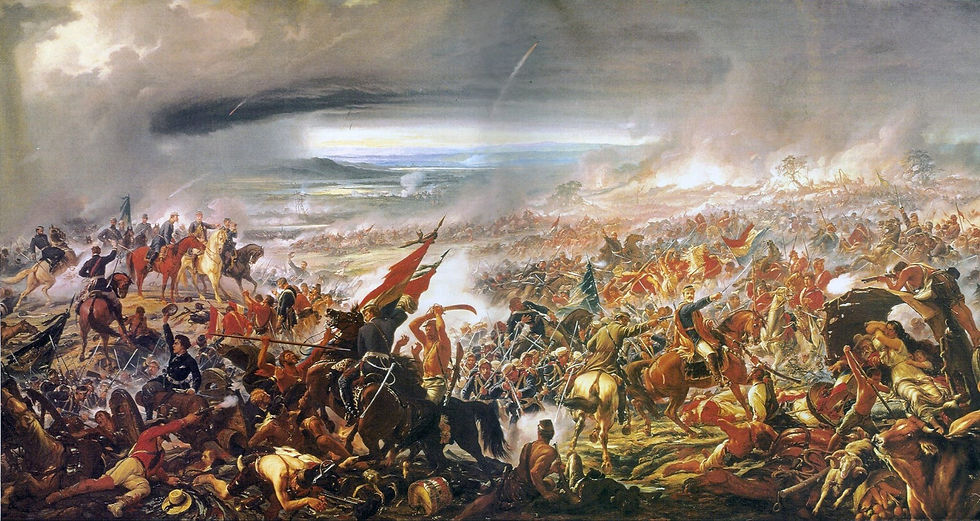Rotten Trees of Society
- Isaac Gonzalez
- Oct 28, 2013
- 3 min read
We now transition into a book of a different genre than epic, what I was introduced to the class with The Iliad by Homer, now we move into the genre of picaresque with the book “The Adventures of Simplicius Simplicissimus” by Grimmelshausen. Picaresque is the underbelly of an epic thus, while epics are told from a high perspective and aim their spotlight at the gods, a picaresque tends to do the opposite and focus on a small figure who overcomes challenges in day to day life instead of epic battles.
Simplicius, is simply a child who has no knowledge of the outside world or it’s dangerous. To me he is a pure individual who is simply full of innocence, and it’s purposely done this way by Grimmelshausen. Little children are often thought to be innocent so they always state the truth, so though Simplicius’ view do we get a truthful perspective without the corruption set on the child’s mind. In chapter 5 of the book, Simplicius is faced with the corruption of the 30 year war that is being fought as his tale takes place.
Simplicius envisions the structure of German society as a tree where “everything was neatly divided by rank. (II.25.13)” This tree that Simplicius envisions is depicted as in his dream. At the top of each tree sat a cavalier whom was the highest of ranks, instead of the tree blooming a variety of leaves, it held different types of Calvary. The lower class which consisted of craftsmen, laborers, and peasants lay was present in the bottom of the tree. Instead of roots, the tree had the lowest classes gathering resources. These resources however were extorted from them by the top ranks, such as do branches and leaves from the roots of a tree. Not only did the lower classes have their money and labor “squeezed out of them,” but they are the roots that support the tree, and give it its power. Without roots to gather resources, then the tree would be unnourished and collapse. Simplicius is afraid of such a society where the nobles feed off the poor through extortion, while hardworking peasants are left malnourished and mistreated. He acknowledges this system will not work and will soon collapse, this is displayed in Book 1, Chapter 5 where Simplicius becomes “frightened by rotten trees.”

The Tree of Man, Fritz Eichenberg (1981)
Simplicius notices “rotten tree sending out an eerie light”, the tree is the one envisioned by him where the nobles lie on top. He calls them rotten as they are corrupt, the rich exploit the poor and there’s no way of getting to the top. The eerie light are the flames of war that slowly consume the tree to extinction, because of the war there is a fight between the two classes and so the system slowly becomes forgotten and unfollowed. As he becomes frightened by the “rotten trees” he runs further into the forest and into nature. This is a representation of his view towards a more naturalistic society where there are no “rotten trees” and governmental systems. He supports a naturalistic view and desires “nature take its course”. In the end, Simplicius crawls into the hollow tree with his bagpipe. What we assume from this is that he simply craws back into society. He however mentions “taking good care of his beloved pipe”. This pipe has carried this pipe with him through his childhood and used it to heed the wolves away. Wolves in children tales often represent those bad influences that crave to destroy a child’s innocence such as in “Pinocchio” or “little Red Riding Hood”. This bagpipe is something he protects and cherishes more than his life itself, when he was faced with danger against the soldiers he made sure not to leave behind or even damage his bagpipe. While he hides in the hollow trees, he will protect his ideals and cunning intellect
Works Cited
Grimmelshausen, Hans Jakob Christoph Von, and George Schulz-Behrend.The Adventures of Simplicius Simplicissimus. Columbia, SC: Camden House, 1993. Print.
Eichenberg, Fritz. The Tree of Man. Digital image. Child's Gallery. N.p., 1981. Web. 26 Oct. 2015. <http://www.childsgallery.com/work/15017423>.

Comments